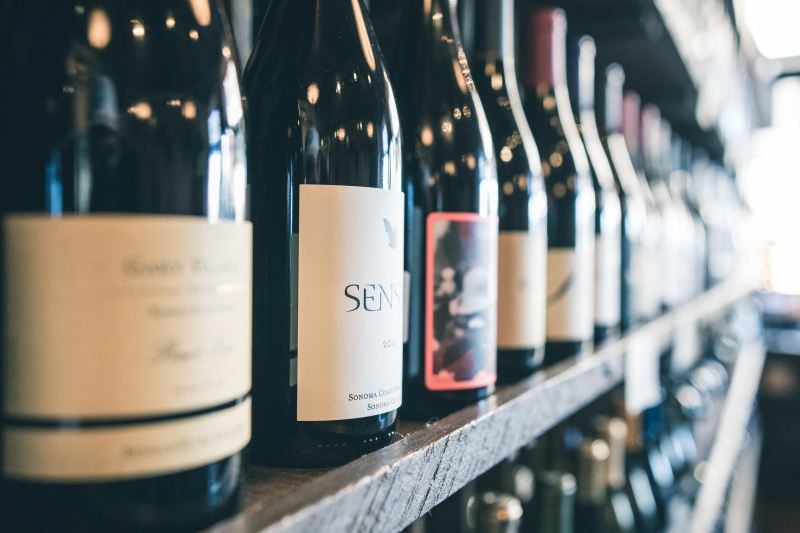
There are many confusing words in the world of wine. With a lexicon that includes things like lees, native yeast, and residual sugar, it helps to have a wine terminology guide.
One word that shows up often but is anything but crystal clear is “reserve.” The title used to apply only to high-quality wines that had been aged a bit more — and built for aging further — hence the name. Consumers were to buy them up and set them aside for later, reserving the cork-popping for when the wine had reached its full and tremendous potential.
It’s no longer that simple. Like many words — from-scratch, intentional, sustainable — reserve can mean many things. The word has more marketing value for many wine producers than anything else. And in the States, unlike much of Europe, just about anybody can slap the reserved name on their work and hope for the best. So, in a quest to know precisely what we’re drinking, let’s take a sharper look at the subject.
Generally, reserve refers to top-shelf wine releases. It’s subjective, sure, but a winemaker will generally assess what’s available and blend what they think is best or set aside a particular barrel or two for the reserve wine. Because these wines tend to age well, they often involve more structure — namely, in the form of acid, alcohol, and tannin. These wines can be a bit chewy upfront, but producers often age them for you a bit before release, making sure they’re drinkable once they hit the shelves.
Just be aware that a winery might use the word reserve the same way a cold cut manufacturer might use “choice” or “select.” It doesn’t necessarily mean anything beyond wishful marketing and the hope that you, the consumer, will believe it’s better than most.

Better terms to look for
Instead of relying on reserve, look for another word. Designating something as “estate” is usually a telltale sign of quality. To be an estate, a producer must be sourcing the entirety of the fruit from a vineyard that the winery controls or owns. That closer connection to the fruit tends to produce a better wine, as these grapes are often set aside instead of blended in with fruit from elsewhere.
While you can ignore a term like “old vine” (again, pretty meaningless), do some extra reading on the back of the label or on the producer’s website. Look for how long the wine was aged, what it was aged in, and where the fruit came from. The term “single vineyard” is another promising phrase if the quality is what you’re after. These wine pull their grape clusters from one site only, usually singled out because of the high quality or uniqueness of the particular vineyard (made so by anything from climate and soil types to the grape clones or age of the vines).
It’s fair to say that older vines produce better fruit, but that’s not always the case. While older vines slow down over time in terms of yield, the caliber of the fruit generally goes up. There’s also a cool factor involved in drinking something produced by a plant that’s older than you.
Production numbers are another good indicator. Typically, only the best wine in a vintage is a small-volume release compared to the entire lineup. Again, that’s because the winemaking team goes through the cellar and selects the very best of the bunch. Also, with a smaller production of wine, vintners can afford to give it the nurturing it might need, whereas a macro wine might be subject to conventional winemaking equipment or big tanks and equipment that could rob the wine of some of its distinctiveness.
Winemaker’s notes can be really helpful in this regard and are usually available through smaller producers, even if you have to dig for them on the trade page of the website or inquire about them at your local bottle shop. They should paint a more colorful picture of the provenance of the wine and even suggest an aging window for maximum enjoyment. Also, looking for a vintage is a good starting point. Larger production wines will often pull from multiple vintages, while higher-quality ones (generally, of course) will pull from a single growing season. The vintage should feature prominently on the front and center of the label.
Really, the term reserve is relative
Like a lot of things in wine, the term reserve is relative. In places like the U.S., Australia, and Germany, it can be used liberally. However, in some areas, the word has genuine meaning and is governed accordingly. That’s the case in Argentina, Italy, and Spain (three years for “reserva” designation and five years for “gran reserva” designation), where the “reserva” name can only be used when the wine has aged a certain period of time. That’s also the case in Austria and a few other areas.
All told the reserve doesn’t tell the whole story. It may indicate some quality, but there are other factors to weigh. Look for some of the other adjectives on the label listed above, and always reach out to your wine steward or brand website for the backstory on the bottle. You’ll enjoy the wine more if you know what’s gone into its creation.
Thirsty for more wine content? Check out our features on life-changing wines from wine pros and how to order wine courtesy of an industry veteran. And if you’re looking to stock up, check out the best red wines under $20 and eleven best white wines. Clink!



